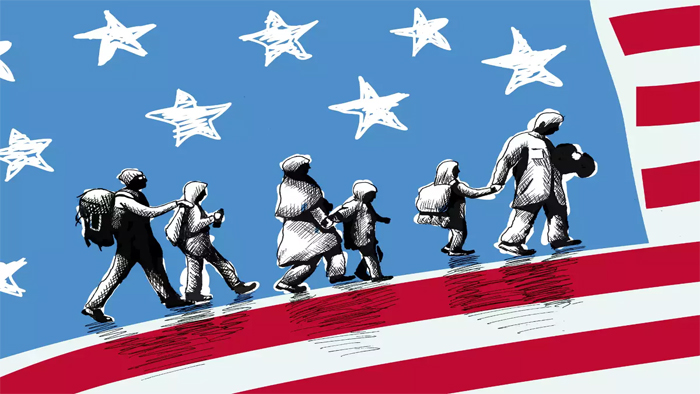The Unseen Path: Delhi's Role in the Risky Journey to the American Dream

In recent years, Delhi has become a key stop for many Indians seeking a better future, with hopes of reaching the United States. This growing trend has seen more and more individuals take risky routes, including traveling through dangerous and unconventional paths, sometimes called the “donkey route,” to achieve what they consider the American Dream. Yet, what often remains unseen is the cost of this journey—both financially and emotionally.
These migrants, mostly from rural India, embark on treacherous routes through countries like Nepal, Egypt, and South America, facing obstacles that are not just physical, but also legal. Delhi, with its proximity to international borders, serves as a hub for such desperate individuals. Here, they receive guidance, advice, and sometimes help with the logistics of their perilous journey. It’s a city that unknowingly plays a pivotal role in this high-stakes gamble.
For many, the hope of reaching the United States is driven by the promise of a better life, access to better opportunities, and escaping the hardships they face at home. However, the situation is far from simple. The journey is fraught with danger, ranging from exploitation by human traffickers to exposure to harsh environments. In this pursuit of a so-called “American Dream,” many have paid with their lives or their dignity.
Delhi’s significance lies in the fact that it has become a hub for these hopefuls to prepare for their long and difficult journey. The city has numerous agents, both legal and illegal, who help facilitate travel, albeit through dangerous channels. The growing network has become so pervasive that it has caught the attention of the authorities, who struggle to curb this illegal migration that thrives in the city.
It’s important to acknowledge the socio-political factors that play into this issue. With limited job opportunities, a lack of education, and widespread poverty in many parts of India, the United States remains an attractive destination. The rising demand for overseas migration reflects the growing dissatisfaction with the country’s domestic policies and the search for hope elsewhere. However, many argue that this trend exposes India’s failure to address the root causes of such aspirations.
At the same time, this phenomenon brings to light the unethical practices that have flourished in Delhi. Agents, often working outside the legal framework, exploit the desperation of these migrants, making enormous profits from their dreams. The government’s inability to effectively regulate these operations only perpetuates the cycle of exploitation, turning a blind eye to the illegal networks in play.
While the desire for a better life is understandable, the exploitation of vulnerable people cannot be overlooked. It raises significant questions about the protection of human rights and the responsibility of both the Indian and American governments. With the future of these migrants uncertain and their chances of success slim, one must question whether their dreams are worth the price they are paying.
Despite the risks and the mounting obstacles, the hope of reaching America continues to drive these individuals. Delhi’s role in this migration process is complex—serving both as a place of refuge and a transit point for those ready to risk everything for a dream. While authorities work to address the issue, it remains to be seen whether meaningful solutions will be found to prevent further exploitation.
The social fabric of Delhi, and by extension India, is under pressure as these migration patterns continue to grow. More than ever, the need for systemic changes to address the economic and social disparities in the country has become urgent. Until then, Delhi will remain a crossroads for those seeking the American Dream, albeit through perilous and often tragic means.